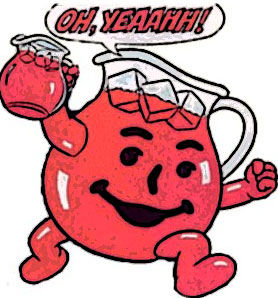After a busy day, the house is again quiet, so I had aspirations of figuring out how to set up my new coffee machine and to decide whether to ever wear the gift of green boxer shorts that say “blogworthy” on them.

For some reason, and perhaps it was the excess food of the past days, but it occurred to me just how unbelievably widespread the flaws in the lending universe of the past few years were. I mean, really, really unbelievable.
I have been outspoken on the topic of appraisal pressure for a number of years, from my front line experience as an appraiser. Though not solely for altruistic reasons. Good (=ethical, not financial) appraisers did not thrive during the housing boom. I focused on what turned out to be more lucrative appraisal work outside of the mortgage business and kept the good clients who understood it was actually important to understand what the collateral was worth. It wasn’t sour grapes on my part, but my wide-eyed amazement at the enormity of the problem.
No one seemed to understand the widespread issue of ethics lapses and building instability of the lending industry while it was happening. It seems that everyone drank the kool-aid, with the thought that “everyone wins.”
Now the damage created by the ethical lapse in judgement is pretty clear and its a 4-6 year mess many of us will have to deal with.
Sour grapes summary
* affordability waned in 2004, causing lenders to loosen the reigns to keep the pipeline flowing.
* orientation moved from down payment (which I recalled, was a real bear to save for) to monthly payment (falsely characterized as a demographic shift in consumer habits)
* the bulk of mortgage origination came from mortgage brokers, who were incentivized to generate loan volume from lenders who took a “don’t ask, don’t tell” view on mortgage quality.
* appraisers became order takers (well, 80% of appraisers are) and had to either sell our soul or get out of the mortgage appraisal business.
* the sales function gained political clout over the underwriting function of the typical retail bank (revenue vs. cost).
* consumers and media readily accepted national housing statistics and drank NAR kool-aid every month.
* real estate surpassed stock market conversations at the backyard bbq.
* carpenters and nurses were quitting their jobs in droves to flip real estate.
* developers were opening sales offices in new projects to serve the flippers and mortgage money was as easy to get as a morning newspaper.
* no doc, “liar loans” were deemed necessary.
* lenders had no idea that it was illegal and unethical to pressure appraisers to make the number.
* banks were built on mortgage loan volume.
* secondary mortgage market investors accepted loan pools purchase with very little understanding of the collateral.
* NAR and local reports were used to guess loan pool values which were then used to judge portfolio purchase spreads (disconnect between risk and value).
* foreign investors were one step removed from secondary market investors and had even less understanding of the content of the mortgage pools they were purchasing.
* mortgages were sliced into varying slivers of risk.
* no Federal Reserve or any meaningful banking oversight as the disconnect from risk was occurring.
* mortgage tranches were so complicated that no one really understood what was in them.
* credit crises became falsely synonymous with subprime.
* the breadth and scope are termed “temporary” and projected to be behind us within a few months.
* low mortgage rates are deemed the savior of housing problems but don’t solve the credit crises.
* GSE’s (Fannie & Freddie) are shaken financially and may have a bunch of subprime under their belts.
* Greenspan acknowledges that there may have been an overheated asset bubble (housing) but it was really all about shakey financing practices that made housing roar.
Sour grapes are enough to give anyone indigestion.
2 Comments
Comments are closed.


I guess the question is how does one appraise when values become unsustainable?
Clearly anyone who wanted a real appraisal would want to know the values weren’t real. One could argue that would be a forecast not an appraisal, but what good is an appraisal if comparable sales are artificial?
I really think one has to consider appraisal by the “income method” for individual homes — based on the income of the people who have been buying houses in the area, not what they did or (with all the money-back fraud) did not happen to pay in a mania.
Nice “sour grapes” summary. Some additional points in the making.